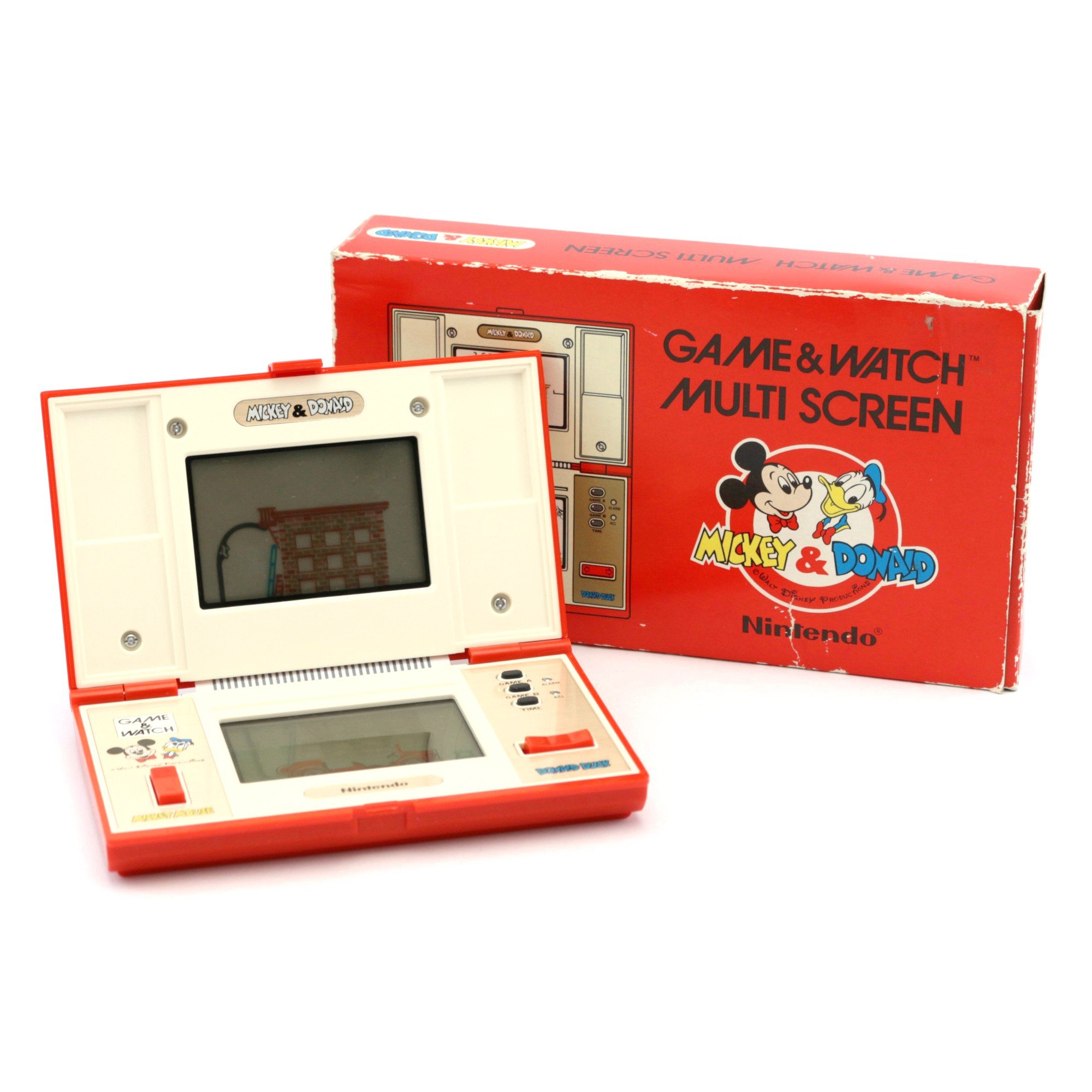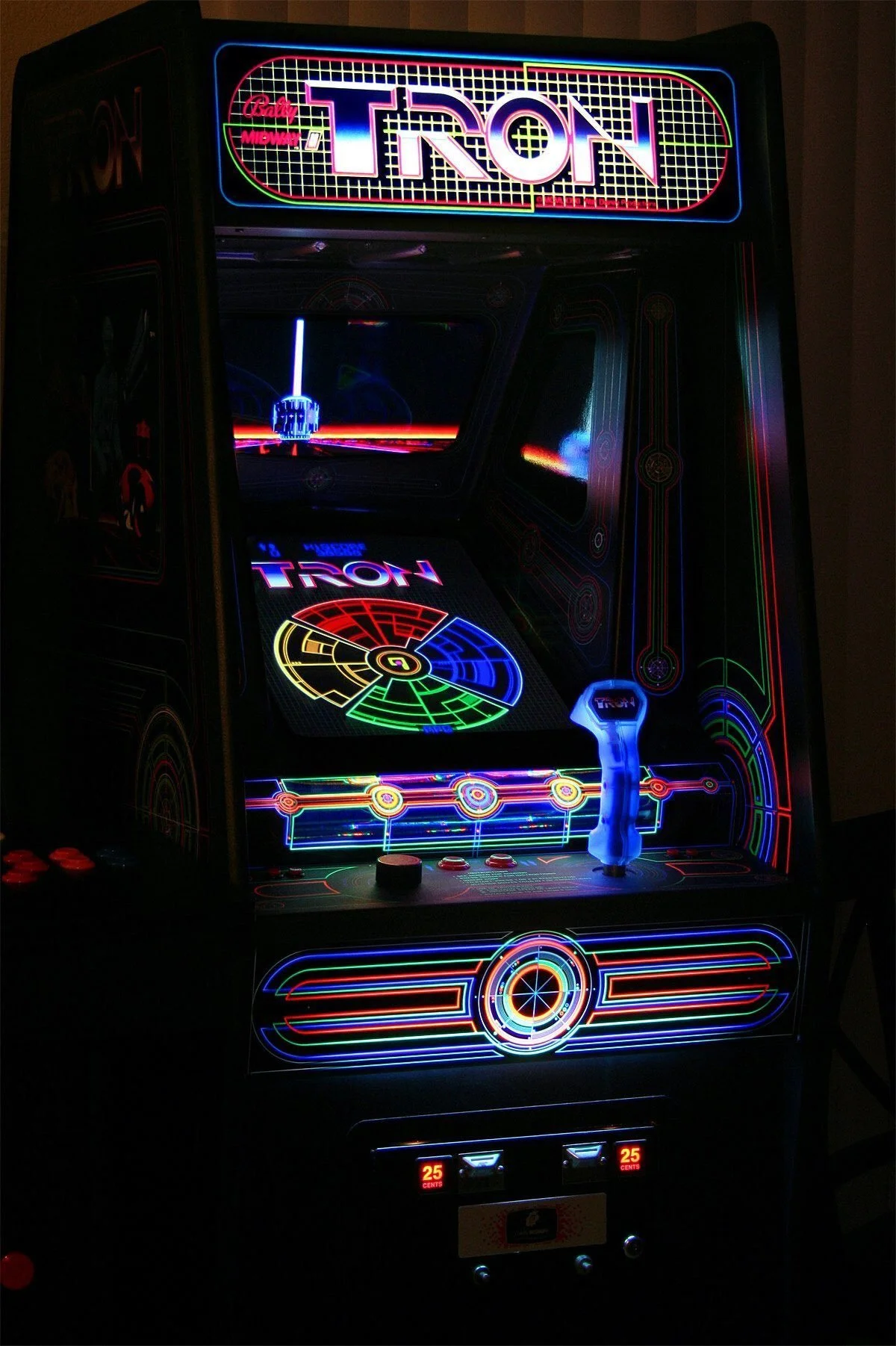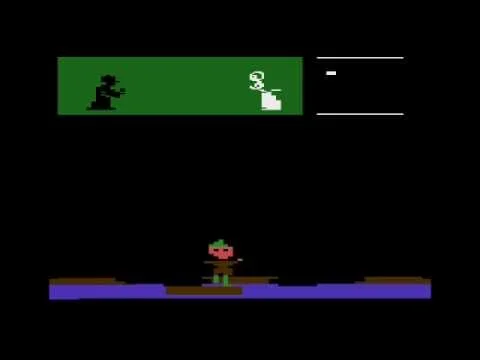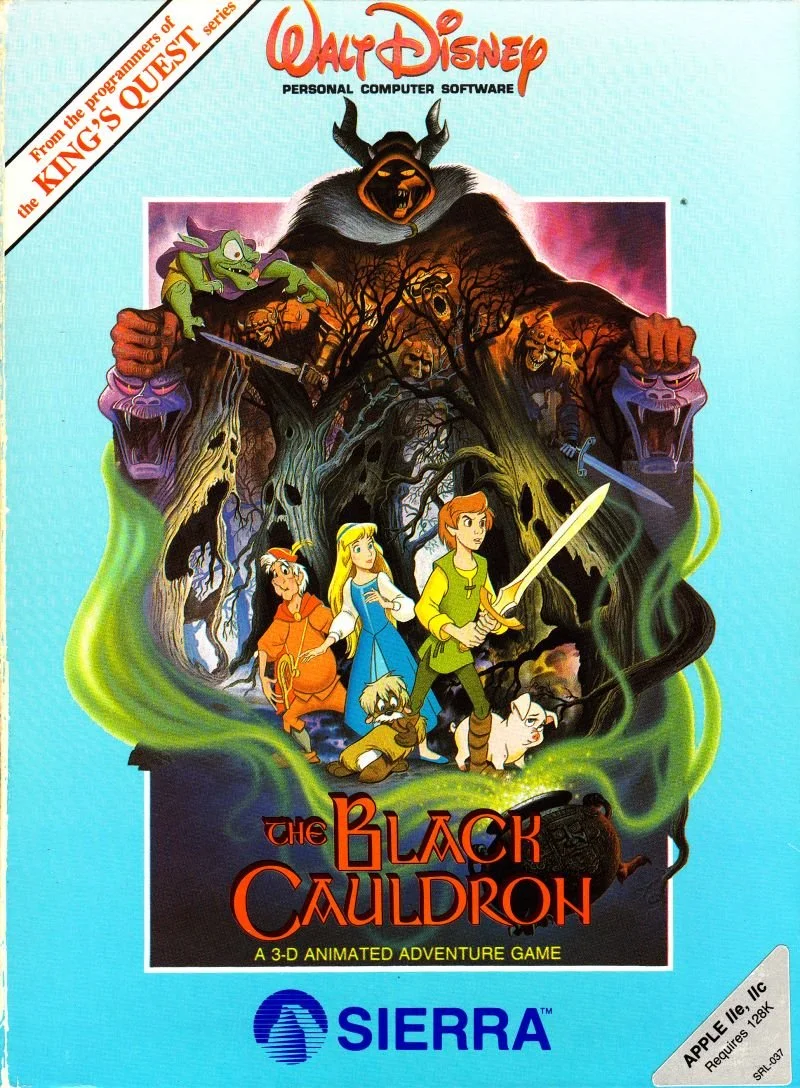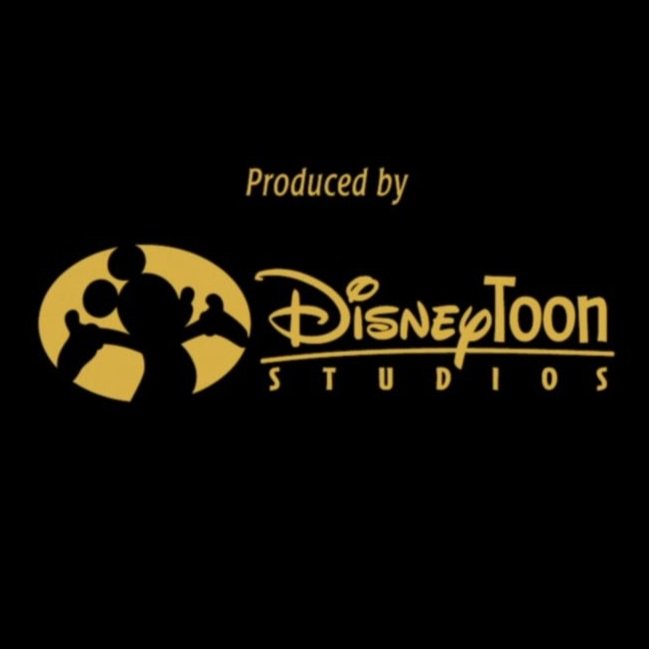Disney Through the 1980s: A Breakthrough into Video Games (Nintendo, Atari, and More)
Disney video games like Kingdom Hearts or Disney’s Dreamlight Valley are amongst a long list of Disney themed video games that came before them. The company’s breakthrough into the video game world began in the 1980s, right around the peak of video gaming in North America. The very first game machine can be traced back to the New York World’s Fair in 1940, invented by Dr. Edward Uhler Condon. The first gaming system for commercial use for families to buy and bring home was The Brown Box in 1967, which involved a cable that connected to the television set and offered a variety of games such as checkers, ping pong, and more. By the end of the 1960s, arcade gaming started to rise in popularity, with Atari becoming the leader of the arcade gaming community from 1972-1985. The start of the 80s decade brought Pac-Man, Nintendo’s Donkey Kong, and Tetris. It was the perfect time for Disney to breakthrough into the industry with the release of their very first game in collaboration with Nintendo’s Game & Watch series, titled Mickey Mouse.
The Brown Box. Image from: https://americanhistory.si.edu/collections/search/object/nmah_1301997
Original Pac-Man. Image from: https://www.youtube.com/watch?v=Y9Ge7SzUeWs
Disney and nintendo (1981)
Nintendo was one of the biggest contenders in the rise in popularity of LCD games. They were rather inexpensive to make at the time, and the idea of portable gaming systems was becoming more and more appealing. It’s been said that Nintendo engineer Gunpei Yokoi got the idea of the Game & Watch system when he observed a business man clicking away at his calculator on his commute to work. Developing a quality game that could be played anywhere at a cheap price for both the company and the consumer began to be his main goal, and so Nintendo started a shift from focusing on toys to games. Nintendo created the Game & Watch in 1980, introducing the accessible D-pad (directional pad) instead of a joy stick to keep the system compact, and adding a clock and alarm to every system from 1981 onward. The first series, called the “Silver” series because of its metallic exterior, had 5 games that you could access, such as Ball, Flagman, Vermin, Fire, and Judge. The second series, Gold, featured 3 more games. In 1981, Nintendo introduced the Wide-Screen series, which made the device 30% larger than the previous two.
This iteration is the one Disney eventually got its hands on, collaborating with the gaming giant and releasing the very first Disney electronic game ever: Mickey Mouse on the Wide-Screen Game & Watch. The game had Mickey Mouse as the star, with which the user could control, and the goal of catching eggs that rolled down slopes on either side of him. If an egg dropped, a chick would appear and walk offscreen. Missing three eggs would end the game, but catching one hundred would reset the amount of misses. Minnie Mouse made a cameo in the game as well, peering out a window, and she had the advantage of counting misses as half when she was on screen.
Game & Watch: Mickey Mouse. Image from: https://helmutssausagekitchen.ca/rasse.php?get/jqx33185dqplitems.htm
In 1982 the companies partnered up again to release Mickey & Donald on the Vertical Multi Screen version of the Game & Watch. To make use of the dual screen function, the game had Donald Duck on the top screen putting out a fire on the top of a building with a hose, and Mickey on the bottom screen pumping the water and occasionally having to stop leakage. It also featured Goofy, sitting in the front seat of the firetruck. The game was complete with an image of Mickey and Donald on the front and on the left side of the inside.
The final Game & Watch Mickey Mouse game was released in 1984, on the Panorama version of the Game & Watch. This time instead of catching eggs, the player was tasked with helping Mickey catch batons in a circus and avoid flaming torches. The game drew inspiration from Donkey Kong Circus, which had essentially the same goal.
Disney would continue to collaborate with Nintendo until the present day, with their most recent release being in 2021 with the Disney Classic Games Collection: Aladdin, The Jungle Book and The Lion King on the Nintendo Switch.
Game & Watch: Mickey and Donald. Image from: https://www.konsolenkost.de/nintendo-game-watch-mickey-donald-dm-53-multi-screen-mit-ovp-sehr-guter-zustand-gebraucht_1060783_56033/
Tron series (1982)
Disney’s 1982 science-fiction movie titled TRON would become the foundation for many of the technological advancements the company would make moving forward. Not only was it different from the content they had been previously making, it was also one of the first major motion pictures to include the use of CGI. The idea for the film came from Steven Lisberger’s fascination with the video game Pong, and what he could do with that type of setting within a film. The draft was brought to Disney by Steven to see if they would pick it up and invest in it, and once they saw the test reel, they took a chance on it, which was a rare occurence. It paid off for them in the end, with the movie bringing in almost a 100% increase in profit based on its budget. It has also become a cult classic, with it being the very start of computer animation, one day leading to Toy Story.
With the success of the film and its link with video games, three different developers jumped on the opportunity to make a TRON themed game in 1982. The first of which was through Midway Games Inc., which made an arcade game based on scenes in the film. The arcade game included four minigames called I/O Tower, MCP Cone, Light Cycles, and Battle Tanks. It was very well received, coming in number four of Fun & Games Publishing’s Top Ten arcade games in 1983. It placed just after Donkey Kong Jr. and just before Donkey Kong. A sequel was made for this game by Midway Games Inc. in 1983, called Discs of Tron.
That same year, Tomy Company Ltd. released a handheld game called Tron, which consisted of three games. Tomy showed interest in Tron very early on, even developing TomyTronic Tron, a tabletop video game that was released and distributed in the UK one year prior to the film's release. In 1983, they also released the TomyTutor Tron in Japan.
World-famous toy company Mattel also got their hands on the Tron franchise, and created three different games all in 1982. Tron: Deadly Discs, Tron: Maze-a-Tron, and Tron: Solar Sailer all saw great success on Mattel’s Intellivision gaming system. Tron: Maze-a-Tron was later rereleased on the Atari 2600 with a new name, titled Adventures of Tron.
More games based on Disney’s TRON have since been released, all throughout the early 2000s and early 2010s, and the first TRON arcade game even made a quick cameo in Ralph Breaks the Internet.
Midway Games TRON arcade game. Image from: https://eightiesgalaxy.tumblr.com/post/636520461973520384/1983
TRON arcade game in Ralph Breaks the Internet. Image from: https://twitter.com/moviepollz/status/1097078448495853568
Tomy Company TRON game. Image from: https://www.konsolenkost.de/nintendo-game-watch-mickey-donald-dm-53-multi-screen-mit-ovp-sehr-guter-zustand-gebraucht_1060783_56033/
Mattel’s Maze-A-Tron. Image from: https://www.imdb.com/title/tt0384623/
Disney and atari (1983)
Atari was one of the leading arcade video game companies in the 1970s, developing the infamous Pong game that would take over the market in 1972. With the quick success of their company, they developed several more games in the coming years, including Street Racer, Star Ship, Video Olympics, and more. They partnered with Steve Jobs in 1974, and they created the Breakout video computer system game program, which was yet another smash hit. In 1976, the company was sold to Warner Communications, and the Video Computer System (VCS) would begin to be built. The VCS was the very first system that allowed users to play arcade games from the comfort of their own home. It would become the base model for the Atari 2600, which would be released in 1977.
Disney and Atari’s relationship began prior to the 1980s, when several prototype games were being developed but ended up being cancelled. Atari was on a fast moving rise, becoming one of the world’s fastest growing companies ever. Disney, though on an uphill trajectory for decades, began facing financial crisis in the 1980s. It would only make sense for Disney to try and move in on the success of the promising new platform.
Some of the cancelled game prototypes included Donald Duck’s Speedboat (1979), Snow White and the Seven Dwarfs (1982), and Dumbo’s Flying Circus (1983). Donald Duck’s Speedboat would find Donald in a large body of water, racing through an obstacle course of rocks, whirlpools, and more. Users didn’t have to let Donald “die” in this game if he hit a rock, but rather let you back up and go around if you hit something. The reason for it going unreleased is unknown.
Atari’s Donald Duck’s Speedboat prototype. Image from: https://www.youtube.com/watch?v=-I-q-43fO_Q
In Snow White and the Seven Dwarfs, you had 3 levels, and your goal was to try and save Snow White from being poisoned by the Evil Queen. The 3 levels were the Dwarf’s Mine, in which you try to collect diamonds and rubies, then you head onto The River, where you as the dwarf, try to make it across a river by jumping from one bank to another. The final level is The Evil Forest, where you try to escape without being touched by the trees.
Atari’s Snow White prototype. Image from: https://www.youtube.com/watch?v=nOM2CTxeJEE
Dumbo’s Flying Circus had Dumbo flying across the screen, attempting to catch or shoot balloons before they reach the top of the screen with peanuts from his trunk. The game also included floating bombs which you had to shoot down, a clown that would ride a balloon that you needed to catch, and an appearance by Timothy Q. Mouse, in which you would also have to catch him before he flies off screen.
Atari’s Dumbo’s Flying Circus prototype. Image from: https://www.youtube.com/watch?v=RMV614jMntM
Some of the games that did make it onto the market were Sorcerer’s Apprentice (1983) on the Atari 2600 and Mickey in the Great Outdoors (1983) on the Atari 8-bit. The Atari ST was also compatible with many other games created by other developers, like The Jungle Book in 1988, Oliver & Company in 1989, and Goofy’s Railway Express in 1990.
Disney and sierra on-line (1984-1986)
Sierra On-Line was founded in 1979, and is best known for being one of the first video game developers and launch into the adventure game genre. Some of their most well known games were King’s Quest, Space Quest, Police Quest, Mystery House, among others. The early 1980s saw major success for them, avoiding the video game crash of 1983 and becoming one of the world’s largest microcomputer software companies the year after. They worked with Disney to develop Mickey’s Space Adventure in 1984, which aligned nicely with the Disney company’s shift in focus from western interest to space interest. Mickey’s Space Adventure was designed by Roberta Williams, the co-founder of Sierra On-Line with her husband Ken Williams. The plot of the game sees Mickey and Pluto completing a mission set by aliens, who need them to look for pieces of a crystal that was broken and left in various parts of the solar system.
That same year, Sierra On-Line and Disney also came out with Donald Duck’s Playground, where Donald is tasked with working 4 different jobs in order to earn enough money to build a playground for his nephews. Winnie the Pooh in the Hundred Acre Wood was also released in 1984, where Pooh must find his friends missing items and return them.
2 years later in 1986, Disney and Sierra On-Line collaborated on a video game based on the 1985 film The Black Cauldron. It was the perfect film to base an adventure game on, and was among just a few films that Sierra On-Line made games based on. Taran would have to complete different missions, with the exciting addition of alternate endings based on what you did in game. The game would be available to play on the Apple II, Atari ST, Amiga, and DOS.
Mickey’s Space Adventure. Image from: https://www.mobygames.com/game/dos/mickeys-space-adventure
Donald Duck’s Playground. Image from: https://www.mobygames.com/game/apple2/donald-ducks-playground
The Black Cauldron. Image from: https://www.mobygames.com/game/apple2/black-cauldron
Disney and epoch/gremlin interactive (1987)
In 1987, Disney would create relationships with 2 new developers, Epoch Co., a Japanese computer game company, and Gremlin Interactive, a British software house. Epoch Co. was founded in 1958, and is best known for creating the Barcode Battler and Doraemon games. They were also the minds behind the Casette Vision, which was a home video game console that was released in 1981. With Disney, Epoch developed games such as Mickey & Minnie: Janguru Tanken, Tough Mickey Boxing Champ, Mickey Mouse Mahou No Yakata, Mickey Mouse wa Shouboushi, Mickey Mouse Fantasy World, Mickey to Kyanpu e Ikou, Mickey Mouse Hassuru Tenisu, Mickey & Donald: Soccer, Mickey Mouse Kyoryuto Dai Dasshutsu, Donald & Goofy, Donald & Daisy, Oliver & Company, and Alice no Paint Adventure. All of these games were released between the period of 1987 and 1995 on a Handheld LCD.
Donald & Daisy Epoch game. Image from: https://paypayfleamarket.yahoo.co.jp/item/o1034141878
Mickey Mouse Fantasy World. Image from: https://www.youtube.com/watch?v=YTiXpK6GkcU
Gremlin Interactive was founded in 1984, first as a computer store. It eventually morphed into a software house, where they would also develop games like Wanted: Monty Mole, Motorhead, Fatal Racing, and broke into the sports video game era when EA Sports started to hit it big. They made games that were compatible with the Commodore 64 home computer system and the ZX Spectrum computer. They only worked with Disney briefly, manufacturing a game simply called “Mickey Mouse”, and another called “Basil the Great Mouse Detective”. The latter was an arcade adventure game, with 2D graphics that had Basil jumping onto boxes, climbing up ladders, and avoiding other mice. The Mickey Mouse game was slightly more advanced in its graphics with the addition of 3D perspective rooms, and had Mickey defeating monsters like ghosts and Frankenstein.
Basil the Great Mouse Detective. Image from: https://gamefaqs.gamespot.com/sinclair/990100-walt-disneys-basil-the-great-mouse-detective/videos/170702
Mickey Mouse. Image from: https://www.youtube.com/watch?v=Ics9-eGfRs4
disney interactive studios (1988)
The following year after Disney’s partnerships with these manufacturers and developers, they continued their relationship with some, but not all. By 1988 they decided they would venture into new territory for them, as by this time they were only familiar with the film industry and the theme park industry. Walt Disney Computer Software, Inc., was born on September 15, 1988. It would have 3 more iterations over the next 28 years, and produce games based on their films. More on this at another time.
Reference list:
https://techcrunch.com/2015/10/31/the-history-of-gaming-an-evolving-community/
https://disney.fandom.com/wiki/Disney%27s_Activity_Center
https://disney.fandom.com/wiki/Disney_Interactive_Studios
https://en.wikipedia.org/wiki/List_of_Disney_video_games#Disney_animated_feature_films_games
https://gamerant.com/first-disney-games-ever-made/
https://www.museumofplay.org/video_games/
https://en.wikipedia.org/wiki/List_of_Game_%26_Watch_games#Mickey_Mouse
https://en.wikipedia.org/wiki/List_of_Game_%26_Watch_games#Silver
https://en.wikipedia.org/wiki/Game_%26_Watch
https://www.youtube.com/watch?v=Y-MupMgHpvc
https://en.wikipedia.org/wiki/Tron_(franchise)#Video_games
https://en.wikipedia.org/wiki/List_of_Disney_video_games#Disney_animated_feature_films_games
https://en.wikipedia.org/wiki/Adventures_of_Tron
https://tron.fandom.com/wiki/TRON_(handheld_game)
https://disney.fandom.com/wiki/Tron
http://www.atariprotos.com/2600/software/dumbo/dumbo.htm
https://atari.com/pages/history
http://www.atariprotos.com/2600/software/snowwhite/snowwhite.htm
http://www.atariprotos.com/2600/software/donaldduck/donaldduck.htm
https://en.wikipedia.org/wiki/The_Black_Cauldron_(video_game)
https://en.wikipedia.org/wiki/Winnie_the_Pooh_in_the_Hundred_Acre_Wood
https://en.wikipedia.org/wiki/Donald_Duck%27s_Playground
https://en.wikipedia.org/wiki/Mickey%27s_Space_Adventure
https://en.wikipedia.org/wiki/Sierra_Entertainment
https://en.wikipedia.org/wiki/Epoch_Co.



